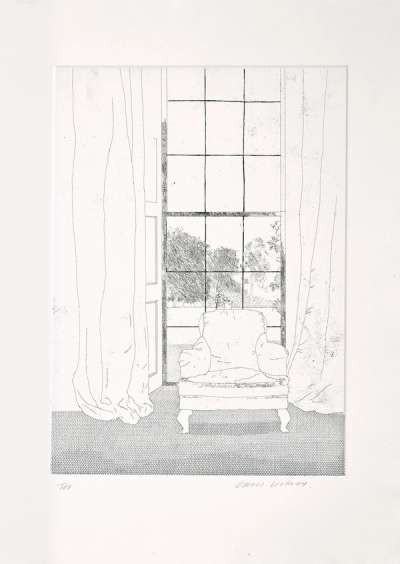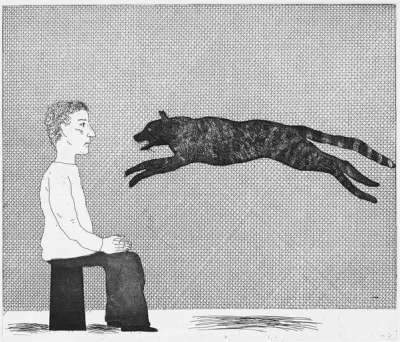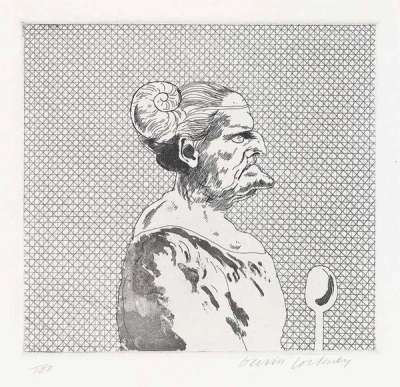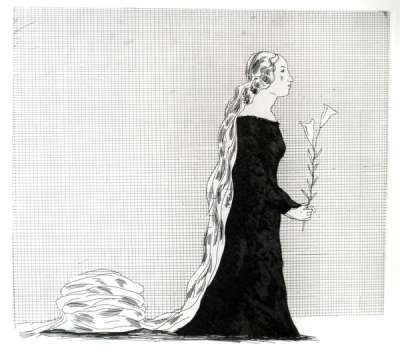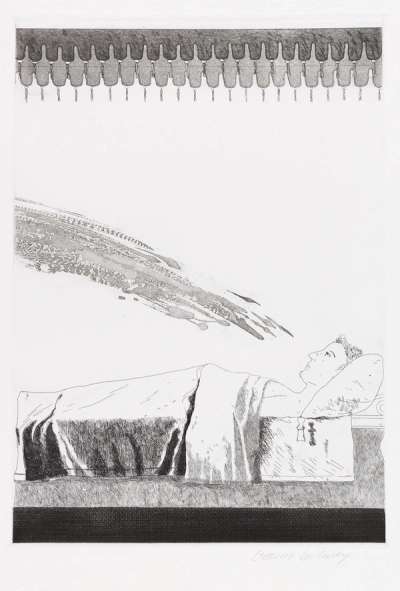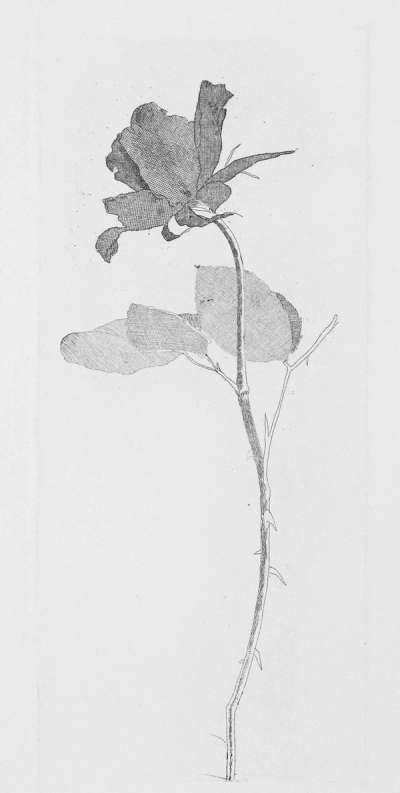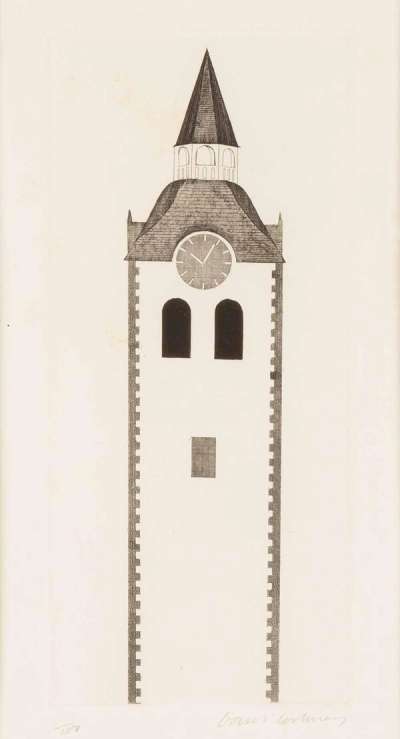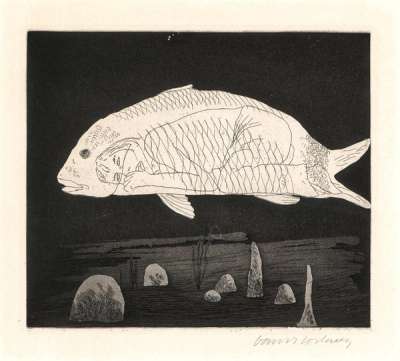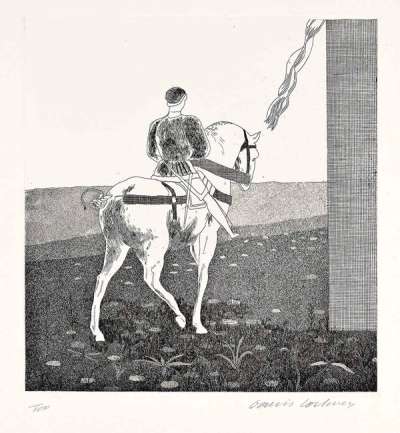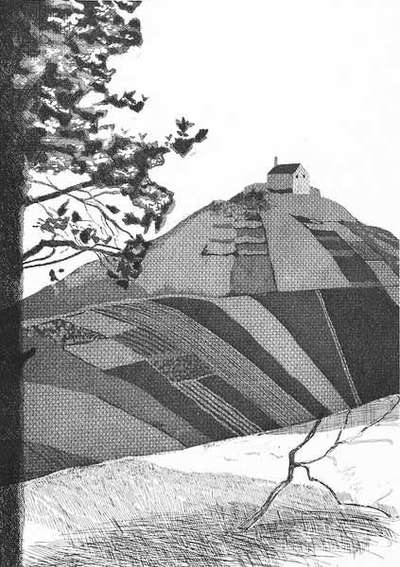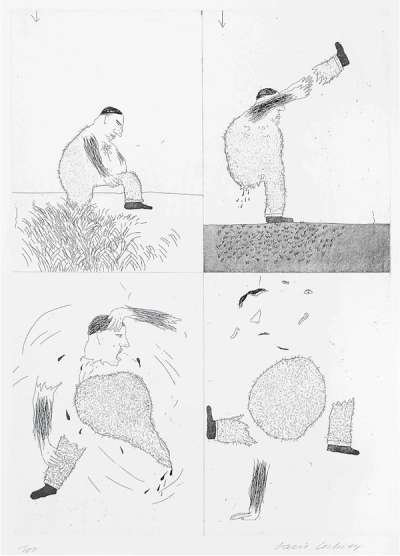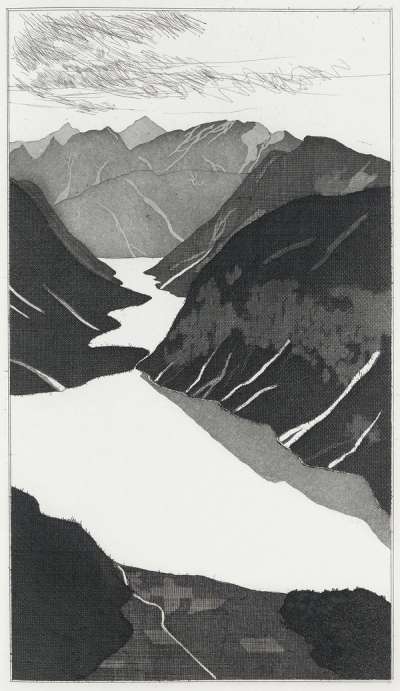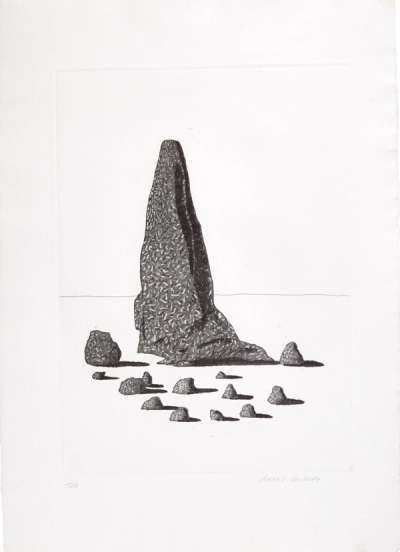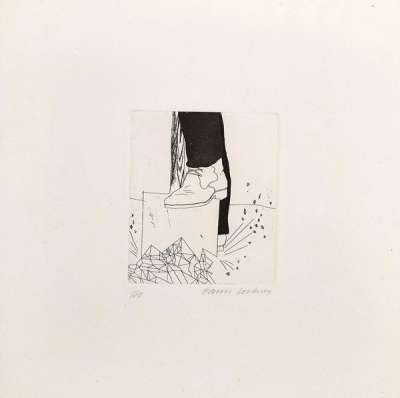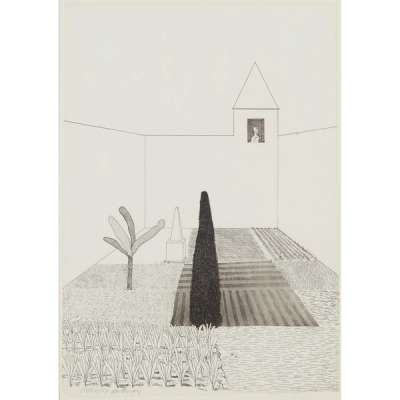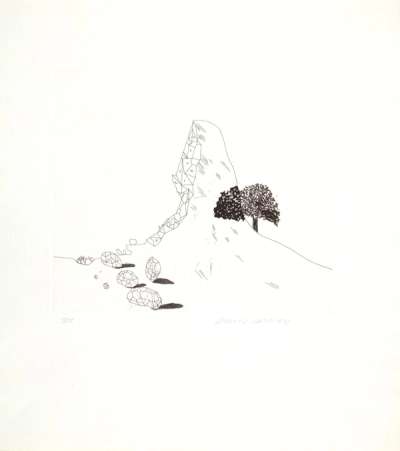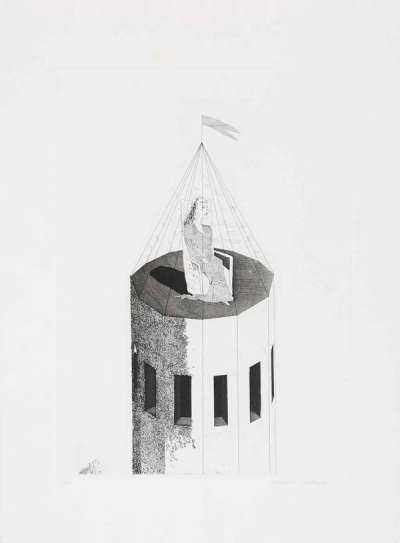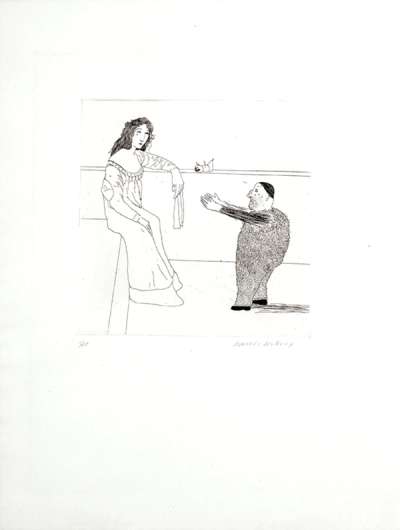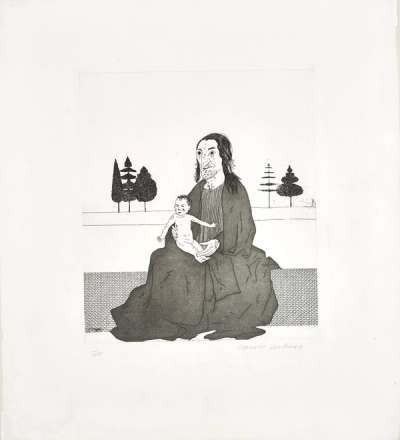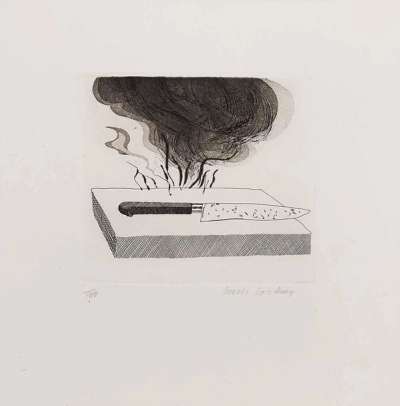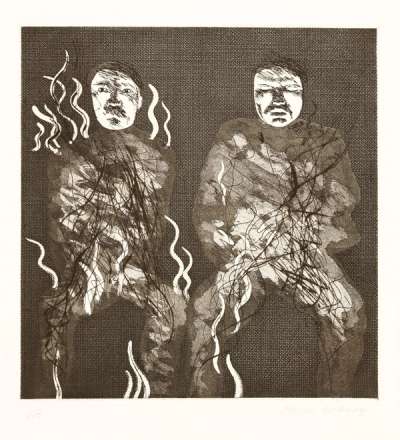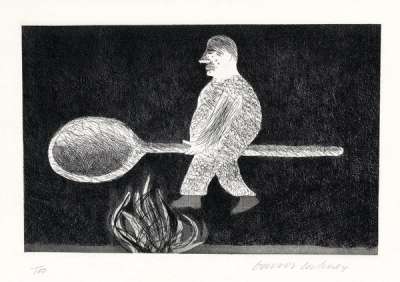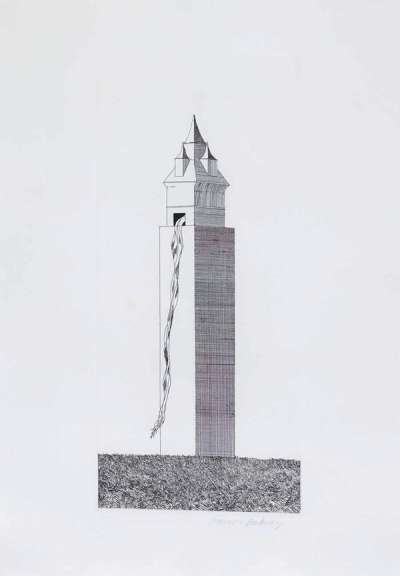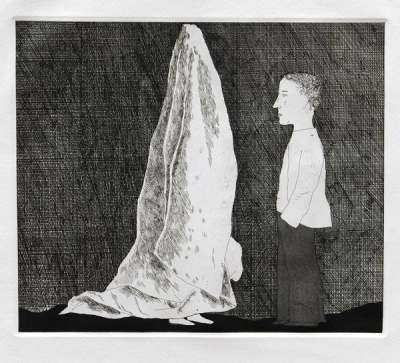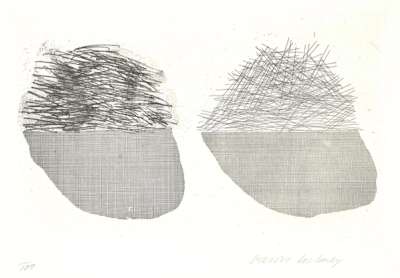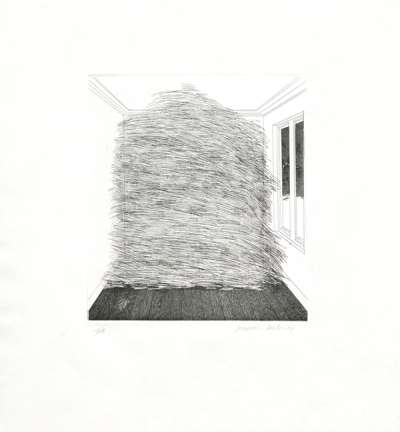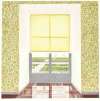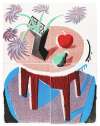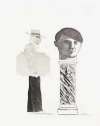Illustrations
For Six Fairy Tales From The Brothers Grimm
David Hockney’s Illustrations For Six Fairy Tales From The Brothers Grimm are among the artist’s best-known etchings. Conceived over three years and published in 1969 they showcase the artist’s ingenuity for composition, his charm as a draughtsman and his mastery of the medium of print.
David Hockney Illustrations For Six Fairy Tales From The Brothers Grimm For sale
Illustrations For Six Fairy Tales From The Brothers Grimm Value (5 Years)
With £54675 in the past 12 months, David Hockney's Illustrations For Six Fairy Tales From The Brothers Grimm series is one of the most actively traded in the market. Prices have varied significantly – from £260 to £14497 – driven by fluctuations in factors like condition, provenance, and market timing. Over the past 12 months, the average selling price was £2278, with an average annual growth rate of 4.87% across the series.
Illustrations For Six Fairy Tales From The Brothers Grimm Market value
Auction Results
| Artwork | Auction Date | Auction House | Return to Seller | Hammer Price | Buyer Paid |
|---|---|---|---|---|---|
 The Older Rapunzel David Hockney Signed Print | 20 Nov 2025 | Bonhams New Bond Street | £1,870 | £2,200 | £2,800 |
 The Tower Had One Window David Hockney Signed Print | 20 Nov 2025 | Bonhams New Bond Street | £1,700 | £2,000 | £2,550 |
 Rapunzel, Rapunzel David Hockney Signed Print | 20 Nov 2025 | Bonhams New Bond Street | £1,700 | £2,000 | £2,550 |
 The Boy Hidden In A Fish David Hockney Signed Print | 19 Nov 2025 | Christie's New York | £2,125 | £2,500 | £3,400 |
 The Cook David Hockney Signed Print | 27 Oct 2025 | Chiswick Auctions | £213 | £250 | £350 |
 The Church Tower And The Clock David Hockney Signed Print | 15 Jul 2025 | Sworders | £255 | £300 | £400 |
 The Sexton Stood Still As A Ghost David Hockney Signed Print | 15 Jul 2025 | Sworders | £1,105 | £1,300 | £1,650 |
 To Remain David Hockney Signed Print | 3 Jul 2025 | Chiswick Auctions | £1,360 | £1,600 | £2,150 |
Sell Your Art
with Us
with Us
Join Our Network of Collectors. Buy, Sell and Track Demand
Meaning & Analysis
A self-proclaimed ‘Literary Artist,’ Hockney’s Illustrations for Six Fairytales from the Brothers Grimm are among some of his most popular etchings. P. Cavafy, David Hockney’s Illustrations For Six Fairy Tales From The Brothers Grimm are among the artist’s best known etchings. Conceived over three years and published in 1969 they showcase the artist’s ingenuity for composition, his charm as a draughtsman and his mastery of the medium of print.
As with the aforementioned series, the Brothers Grimm prints are characterised by their mostly blank backgrounds, which in 1969 presented a break from his painting style where an almost photographic naturalism was beginning to take hold. The fairytale subjects allowed him to work with a more playful style, and experiment with soft ground technique which meant he could make marks as if he were merely drawing on paper. He also made use of aquatint for shading which allowed him to bring darker and lighter tones into works such as The Lake and The Boy Hidden in an Egg.
The series is also characterised by extensive cross hatching which allowed him to achieve a deeper black, and is a technique Hockney is said to have picked up not just from Hogarth but also Giorgio Morandi’s prints. These various techniques are another way in which Hockney ‘quotes’ the masters that came before him. Whether it’s Matisse in a still life or Picasso in a portrait, his works of art are always looking back as well as out at the viewer, their artifice brought to the fore by conscious referencing and overt display of technique.
